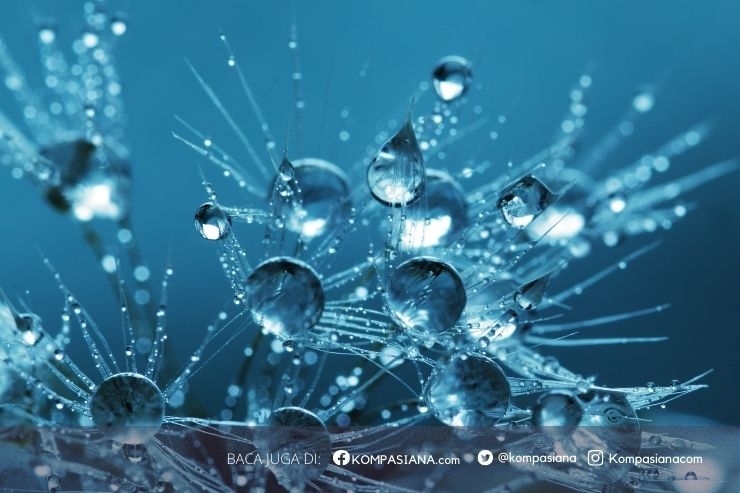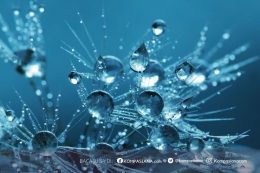Plastic is one type of item that is always present in our daily lives because it has properties that are versatile, lightweight, strong, durable, and also cheap. Due to the many uses, the production of plastic is very abundant and the use of plastic itself is also very high in Indonesia along with the increasing number of requests from industrial production whose basic materials are made of plastic. Globally, it is estimated that around 80% of marine plastic comes from land and 20% from the sea (Li et al., 2016). Plastic waste is very varied which can be distinguished according to size, origin, shape, and content. Plastic waste according to size is divided into 4 parts, namely: mega plastic debris (size > 100 mm), macro plastic (size > 20-100 mm), meso plastic debris (size > 5-20 mm), and the last one is micro plastic debris. (0.3-5mm).
Microplastics are microparticles with a size range of < 5 mm (Arthur and Barnes, 2009). Small plastic waste or commonly called microplastic often looks like a plankton organism or other small particles that are food for marine biota and life (Wright et al, 2013).
Microplastics are found in marine areas close to human activities (coastal and estuaries), including oil drilling and shipping (Castillo, Al-Maslamani, & Obbard, 2016), industry and ports (Frias, Otero, & Sobral, 2014). The highest microplastic content is usually found in the rainy season, when the coastal environment gets a lot of water input from rivers which contain lots of plastic fragments through the estuary (runoff).
Sources of microplastics are divided into two, namely primary and secondary. Where the primary source is pure plastic granules that reach the sea area caused by negligence or in their use. Meanwhile, the secondary source is microplastic waste that is produced as a result of greater plastic fragmentation.
Primary sources of microplastic waste include content in cleaning and beauty products, pet food, resin powder, and others. According to primary sources, microplastics enter aquatic areas through household waste channels. Primary microplastics are plastics that are produced in small sizes such as in cosmetic products such as scrubs (EFSA, 2016). Secondary sources include fibers or chain-cutting pieces from larger plastics that may occur before microplastics enter the environment. These pieces can come from fishing nets, industrial raw materials, household appliances, plastic bags that are designed to be degraded in the environment, synthetic fibers from washing clothes, or due to weathering of plastic products (Browne et al, 2011). Plastic that is thrown into the river will be carried by the flow into the ocean, which is then broken down into smaller plastics. These microplastics will float around in the ocean without being able to decompose for hundreds of years because they are difficult to decompose and become food for organisms or biota that live in the sea.
More than 300 million tonnes of plastic produced for single use each year will end up in the oceans of at least 8 million tonnes. Around 69-81% of microplastics that enter the ocean are secondary microplastics originating from the degradation of plastic waste in the environment. The largest producers of microplastic sources are synthetic textiles and tires.
Plastic waste is a serious threat to marine ecosystems. More than 690 marine species have been affected by this plastic waste, both in the size of debris (debris) and small (microplastic) observed in the digestive tract of organisms from various trophic levels of the food chain (Carbery, O'Connor, & Palanisami, 2018) .
Microplastics are small in size and tend to float in pools of water so they can easily enter and accumulate in marine organisms (Cordova, Purwiyanto, & Suteja, 2019). So it can be easily eaten by fish (Yudhantari, Hendrawan, & Ria Puspitha, 2019), shellfish (Mytilus edulis) (Von Moos, Burkhardt-Holm, & Khler, 2012), sea worms, sea birds and even planktonic biota such as zooplankton can also eat these microplastics by accident (Cole et al., 2013, 2016).
Zooplankton in the meroplankton type is the juvenile stage of species that have high economic value such as Bivalvia larvae, Brachyura (megalopa), Caridae larvae, Paguridae larvae, and Porcellanidae. These types of meroplankton were identified as eating microplastics either in whole or in part (Cole et al., 2013). In general, zooplankton can eat microplastics with a diameter of 1.4-30.6 m with different capacities depending on the species and size of the microplastic (Cole et al., 2013). The microplastics eaten by zooplankton not only have an impact on the zooplankton itself, but also on the marine ecosystem. This is because zooplankton has an important role in ecology as the main food for small carnivorous biota such as shrimp larvae, bivalves larvae, and small fish.
Zooplankton (planktonic organisms) that eat microplastics can be eaten by shrimp, which are organisms from one higher trophic level so that the impact will occur in the transfer of microplastics (trophic transfer) in the food chain and allow accumulation in the food web (Carbery et.al, 2018) ;(Panti et al., 2015); (Setl, Fleming-Lehtinen, & Lehtiniemi, 2014). The density of microplastics in the water column will determine the bioavailability of microplastics in zooplankton (Botterell et al., 2019) which will then allow the occurrence of microplastics. transfer of microplastics to higher organisms (predators) (Lima, Costa, & Barletta, 2014). Zooplankton (species in the lower tropics in marine ecosystem food webs) that feed on these microplastics pose a risk that juvenile salmon consume 2-7 microplastic particles per day and 91 microplastic particles in adult salmon on the Columbia coast. Two zooplankton were observed, namely Neocalanus cristatus (copepoda) and Euphausia pacifia (euphasiid) (Desforges, Galbraith, & Ross, 2015).
The impact of microplastics on biota in the waters has the potential to cause harm to the environment. The entry of microplastics in the body of biota can damage the digestive tract, reduce growth rates, inhibit enzyme production, decrease steroid hormone levels, affect reproduction, and can lead to exposure to plastic additives with greater toxic properties (Wright et al., 2013). Smaller plastic waste such as bottle caps, matches, and plastic pellets can be ingested by aquatic organisms and cause intestinal blockages and potential chemical poisoning. Meanwhile, microplastics can be ingested by even the smallest organisms in the habitat and cause serious impacts.










